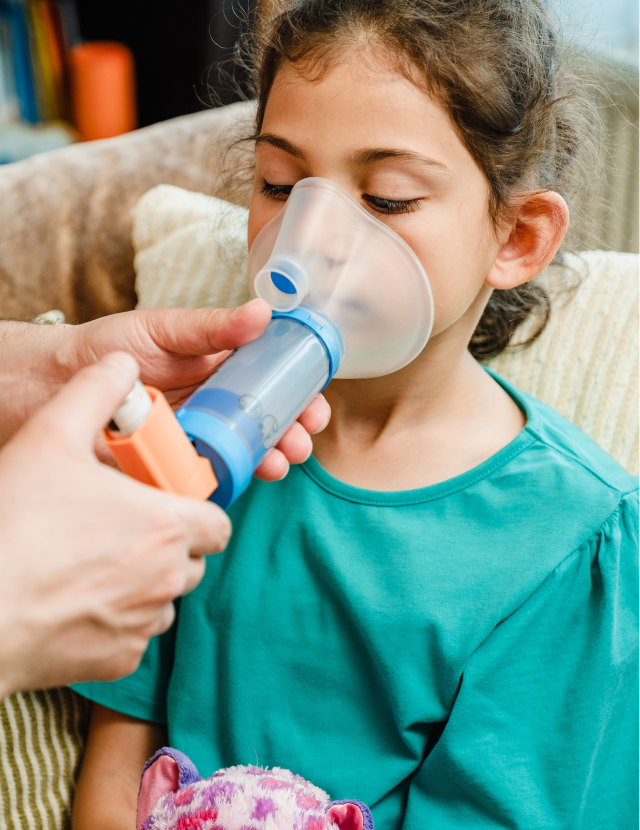Providing Free Air Cleaners & Asthma Education to Address Health Disparities
Highlights

In 2023, PHI’s Regional Asthma Management and Prevention (RAMP) and partners piloted a new program to provide free, certified indoor air cleaners and asthma education to Bay Area community members most susceptible to the impacts of wildfire smoke.
1K Bay Area homes received air cleaners and asthma education
-
Focus Areas
Chronic Disease Prevention, Environmental Health -
Issues
Asthma -
Expertise
Health Education & Promotion
Due to climate change, California’s wildfire season has grown in length and severity over the past several years—regularly exposing millions of residents to harmful particulate matter and hazardous air pollutants. While everyone in a given geographic region may be exposed to smoke during a wildfire, the impacts are not experienced equally: children, pregnant women, people with underlying health conditions like asthma and other lung and heart disease, and other vulnerable groups are at greatest risk.
Using an air cleaner—also known as an air purifier—that is certified by the California Air Resources Board as a mechanical air cleaner (which means using HEPA filtration only) can greatly reduce indoor particulate levels, improve indoor air quality and help to reduce the health impacts from smoke. However, many low-income Californians cannot afford air cleaners, which contributes to the disparate impact of wildfire smoke and health conditions on low-income communities.
Beginning in 2021, PHI’s Regional Asthma Management & Prevention (RAMP) partnered with the Bay Area Air Quality Management District (BAAQMD) and seven asthma home visiting programs to address the health disparities aggravated by California’s wildfire season by providing free, certified air cleaners to clients in the Bay Area with poorly controlled asthma.
The air is breathable in my house.Program participant with asthma
Clients tell us that they see a significant reduction of allergy symptoms from using the air purifiers… They have mentioned their desire to purchase air purifiers themselves, but that they just have not been able to afford one and are thus very grateful we can provide this service.Asthma home visitor
Building on years of partnerships, training and support for community health workers (CHWs), RAMP knew that CHWs play a unique role in building trust and understanding their clients’ needs, making them critical partners in most efficiently dispersing both the air cleaners and asthma education. Their expertise guided the selection of an array of air cleaner options that could meet the needs of clients and their homes, including spacing and portability. Additional filters were left with residents to extend the shelf life of these. Education materials were also developed in a multitude of languages and formats to increase their versatility and impact.
As of June 2023, the program has placed over 1,000 air cleaners in clients’ homes. Per self-reported data on race and ethnicity, 46% of air cleaner recipients were Latino and 30% were Black.
Clients also received support and education to extend the value of these air cleaners and help increase the overall impact of asthma management so that they would be better prepared during wildfire smoke events. The success of these mitigation efforts provides the framework for replicating and scaling similar programs across the country.

Factsheets & Resources: Choosing Safe, Effective & Affordable Air Cleaners
Explore resources, videos and other materials for consumers, agencies and programs, and schools to help choose safe, effective, and affordable air cleaners, created by PHI's Regional Asthma Management and Prevention program. These resources may also be useful for families and individuals with asthma seeking to purchase or access air cleaners for personal use.
The Bay Area Air Quality Management District’s Home Air Filtration Program: Lessons Learned and Tips for Replication
In July 2023, RAMP published a case study report on the lessons learned from the cross-sector partnership with BAAQMD, the use of air filters in homes and the home visiting programs. The case study offered knowledge sharing that could help similar partnerships across the U.S. launch similar programs, providing the framework to help replicate, scale, and bring similar success to other communities. Key takeaways included:
Partnerships
- Establish Memoranda of Understanding (MOUs) with all participating partners before launching the project and involve partners in project planning and rollout
- Consider an intermediary organization to streamline communication, ordering and data collection
Air Cleaner Selection
- Select vendors and air cleaners through a competitive process with clear, health protective criteria and scoring rubrics
- Involve partners in the process of establishing criteria and selecting vendors
- Provide multiple air cleaners from which partners can select to meet the needs of their organizations and clients
Orders & Delivery
- Work with programs that will be distributing the air cleaners to establish processes for orders and deliveries
Data Collection
- Establish data collection expectations and protocols upfront in partnership with distribution partners
Education
- Provide educational materials in different formats and languages
- When feasible, provide the air cleaners as part of a comprehensive asthma management intervention
Work With Us
You change the world. We do the rest. Explore fiscal sponsorship at PHI.
Support Us
Together, we can accelerate our response to public health’s most critical issues.
Find Employment
Begin your career at the Public Health Institute.
